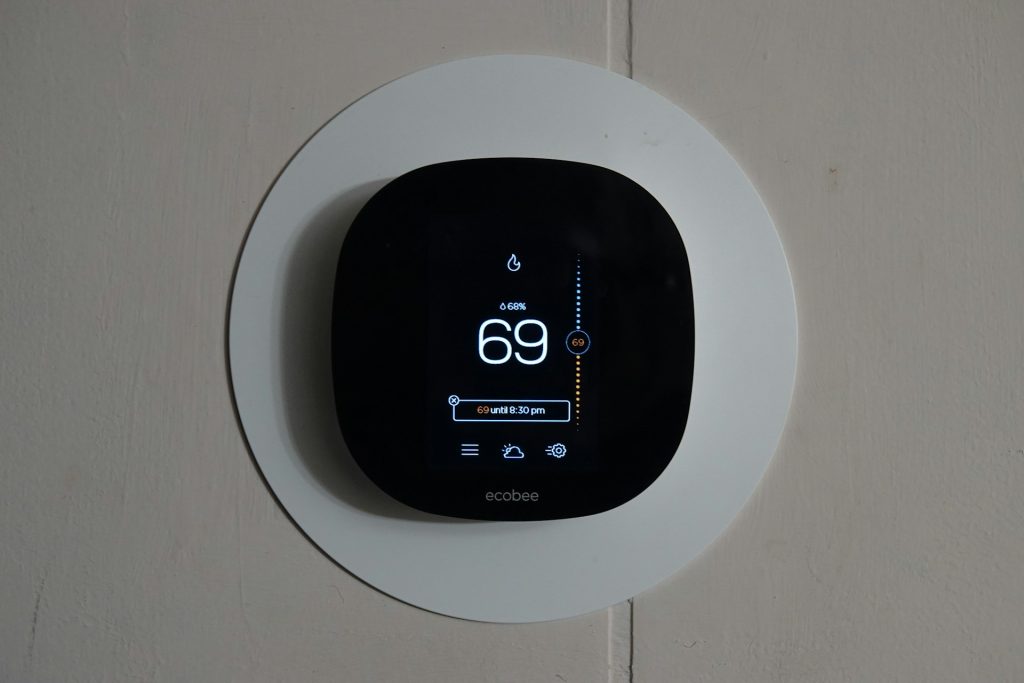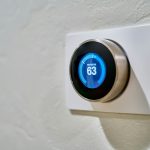Table of Contents
When my home doesn’t feel quite right, the first thing I check is if the thermostat is maintaining the desired temperature. To test your thermostat and ensure it’s pumping out warm air as it should, you’ll need a systematic approach. I’ll walk you through the steps to troubleshoot your thermostat, helping identify any issues that may be affecting your comfort and your energy bill.
Understanding Thermostat Mechanics
Thermostats are the control hub for your home’s climate. They read the current temperature and activate your heating or cooling systems to achieve the desired temperature. But how does this small device manage such a big job? It’s all in the mechanics. Understanding the basic operation of your thermostat is crucial for diagnosing problems and making sure your living space is as cozy or cool as you prefer.
In every thermostat, there are wires that connect to your heating and cooling systems, signaling when to start and stop. These wires play a vital role, and any malfunction could lead to your home not reaching the desired temperature. That’s why, when I test your thermostat, it’s essential to have a clear picture of its internal workings and how they interact with your HVAC system to produce that much-appreciated warm air.
Basic Functionality of Thermostats
At its core, a thermostat‘s job is to maintain the desired temperature in your home, toggling your heating or cooling systems on and off as needed.
The Role of Wires in Thermostat Operation
Wires inside the thermostat are the silent heroes, carrying commands to your heating and cooling systems to ensure your home stays comfortable.
Importance of Correct Thermostat Settings
Correct thermostat settings are the key to achieving the perfect balance of comfort and energy efficiency in your home.
Initial Steps for Testing Your Thermostat
Before delving deeper into troubleshooting, it’s important to differentiate between mechanical thermostats, electronic thermostats, and smart thermostats. Each has its own testing method. First, ensure your thermostat is receiving power. This might involve replacing the batteries or removing the thermostat cover to expose the wiring to see if it’s sending a signal.
Ensuring Thermostat Power Supply
Without power, your thermostat can’t communicate with your HVAC system. Check the circuit breaker or fuse box if changing the battery doesn’t solve the issue.
Checking Breakers and Batteries
Flipping the circuit breaker and ensuring the batteries are fresh are first steps to guarantee your HVAC system gets the message to start up.
Adjusting and Confirming Proper Settings
It’s essential to tweak the thermostat setting to match your comfort level and verify that these adjustments are being registered accurately.
Resetting Temperature and Verifying Calibration
Reset the thermostat to your preferred temperature and check its calibration to ensure it’s reading and regulating the temperature correctly.

Performing a Thermostat Bypass Test
If you’re unsure about your thermostat’s performance, a bypass test can be telling. You can even schedule an appointment online with a professional if needed.
Safety First: Power Shutdown Procedure
Before any hands-on testing, ensure your safety by turning off the power. This step is crucial if you find your furnace burner ignites when it shouldn’t, or if the burner does not ignite due to a thermostat that was improperly connected.
Executing the Wire Jump Test
After powering down, a wire jump test can reveal a lot about your thermostat’s health. This involves carefully connecting specific wires to simulate a call for heat or cooling and observing how your system responds. A successful test means the thermostat is in good shape, while a failure could indicate an issue with the wiring or the thermostat itself.
While this test can be a bit technical, it’s a powerful way to pinpoint where the problem lies. If you’re not comfortable handling wires and electrical components, it’s always best to call a professional. They have the expertise to safely and efficiently diagnose and fix any issues your thermostat might have.
Advanced Diagnostics With a Multimeter
To thoroughly test a thermostat, using a multimeter can provide advanced diagnostics that go beyond basic observation. By gaining access to the thermostat wiring, I can use the multimeter to measure continuity, resistance, and voltage. These readings help determine the integrity of the thermostat’s electrical connections and components, which are critical for maintaining the home’s temperature.
Setting up the multimeter correctly is crucial. I ensure it’s on the right settings for what I’m testing, whether it’s voltage for power supply or resistance for thermostat wiring issues. Faulty thermostats often have electrical discrepancies that can be pinpointed with a multimeter. By conducting these tests, I can offer a more accurate diagnosis of the thermostat’s condition.
Gaining Access to Thermostat Wires
Before I can proceed with electrical testing, I need to gain access to the thermostat’s wires. This typically involves carefully removing the thermostat from its mounting, ensuring I don’t disturb the wire connections or damage the delicate components inside.
Setting Up the Multimeter for Testing
Once I have the thermostat wires exposed, I set up my multimeter to the appropriate function. For testing thermostats, I often toggle between continuity and voltage measurements to check for complete circuits and power presence.
Conducting Electrical Tests on the Thermostat
Conducting electrical tests on the thermostat involves probing the wire terminals while the power is off. I look for continuity between terminals that should be connected according to the thermostat’s wiring diagram, and check for any unexpected resistance that could indicate a problem.
Troubleshooting Common Thermostat Issues
When a thermostat isn’t functioning properly, it can affect the entire heating and cooling system. Common issues include incorrect temperature readings, unresponsive controls, or the system not turning on at all. I start by checking the most basic problems, like incorrect settings or a tripped circuit breaker, then move on to inspecting the thermostat wiring and components.
If the basic checks don’t resolve the issue, I dive deeper. Sometimes, it’s a matter of recalibrating the thermostat or cleaning dust from the inside. Other times, wires are touching when they shouldn’t be, causing shorts. Carefully separating and securing these connections can often restore proper function, but if touching these wires doesn’t solve the issue, it could indicate a deeper electrical problem.
Proactive Thermostat Maintenance Strategies
Proactive maintenance is key to avoiding unexpected failures of the furnace or air conditioner. Regularly checking the thermostat for dust buildup, loose wires, or battery life can prevent many common issues. I like to remind homeowners to schedule a routine inspection at least once a year, preferably before the heating or cooling season begins.
Another strategy is to keep the thermostat’s software updated if it’s a smart model. Manufacturers often release updates that improve functionality and fix bugs. Staying on top of these updates can improve the thermostat’s performance and extend its lifespan.

Local Professional HVAC Services
Local HVAC services offer the expertise necessary to handle complex issues with the heating and cooling system. These professionals are equipped with the tools and knowledge to diagnose problems accurately and provide reliable repairs. Whether it’s a simple calibration or a complete thermostat replacement, they ensure the home’s heating and cooling system operates efficiently.
Moreover, establishing a relationship with a local HVAC service provider means having a trusted resource for regular maintenance. They can keep track of the system’s history and help anticipate potential issues before they become major problems, ensuring a comfortable climate in the home all year round.
Why Choose Certified Technicians for Repairs
Certified technicians have the training and accreditation to ensure repairs are done safely and effectively. They adhere to industry standards and are updated on the latest technologies and best practices for maintaining a home’s heating and cooling system.
Exclusive Offers for HVAC Services
As someone who appreciates the value of a well-functioning HVAC system, I’m always on the lookout for ways to help others save on their heating and cooling needs. That’s why I’m excited to share that many HVAC service providers offer exclusive deals that can significantly reduce the cost of maintenance and repairs. From seasonal promotions to loyalty discounts, these offers are designed to make professional services more affordable, ensuring your system runs efficiently year-round.
Wrapping Up Thermostat Testing Insights
Throughout our exploration of thermostat functionality, we’ve uncovered the intricate dance between smart thermostats and the indoor temperatures they regulate. Smart thermostats control various aspects of home comfort, deftly adjusting furnaces and air conditioners to match our preferences. They rely on a temperature sensor to accurately gauge the environment, which, alongside a portable indoor thermometer, ensures our living spaces remain at our desired warmth or coolness. It’s crucial to recognize the subtle wear and tear these devices endure, as they consistently transmit signals to maintain our comfort. Understanding the nuances of how thermostats control our homes empowers us to keep them in peak condition and consider financing options for upgrades or repairs when necessary. By keeping these insights in mind, we can ensure our homes stay cozy and our systems run efficiently for years to come.

I’m Steve, an engineer dedicated to advancing smart home technologies. Through Eco Smart Spaces, I share insights and expertise on implementing smart solutions that streamline living spaces. Join me in embracing a future where homes work smarter for you.




